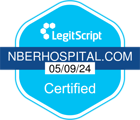March is Endometriosis Awareness Month, a topic that brings women, families, and medical communities together in solidarity. The Endometriosis Awareness movement began in 1993 when Mary Lou Ballweg and seven other women decided that endometriosis, and all the women around the world suffering from it, deserved to be recognized.
As with all health issues, the best way to learn about endometriosis is to talk about it. In honor of EAM, we’re taking a look at the disease that affects one in 10 women.
Get the Facts
Endometriosis is a painful condition found in women when tissue similar to the inner lining of the uterus (endometrial tissue) travels to areas outside of the uterus. Endometrial-like cells can migrate to the ovaries, fallopian tubes, rectum, and other places within the pelvic region. In some cases, it spreads to nonreproductive organs like your lungs or bladder.
The issue with these cells is that it acts like endometrial tissue would during a menstrual period by hardening, breaking down, and bleeding. But, unlike endometrial tissue, it has no exit path from your body and becomes trapped. This can cause scar tissue and adhesions to develop around the affected areas, as well as mild to severe pain.
Endometriosis is commonly mistaken for conditions like pelvic inflammatory disease, ovarian cysts, or irritable bowel syndrome because of similar areas of discomfort.
Signs and Symptoms
The exact cause of endometriosis has not been proven yet, but the risk factors include:
- genetics
- heavy menstrual periods
- starting your period at a young age
- low body mass index
The symptoms of endometriosis include:
- Painful Periods: Abnormal pain and cramping that lasts for several days and can be accompanied by lower back pain and abdominal pain.
- Pain with intercourse: Pain during or after sex.
- Pain using the restroom: Pain with urination or bowel movements, usually worsening during your period.
- Excessive bleeding: Heavy and prolonged periods or bleeding between periods.
- Infertility: It’s common for endometriosis to be diagnosed in those seeking treatment for infertility. However, although it can be the cause of infertility, it is important to note that most women with endometriosis can get pregnant without medical assistance.
- Other signs: Diarrhea, constipation, nausea, bloating, or fatigue that worsens around your period.
Finding Relief
Although endometriosis can be a difficult condition to manage, many women find relief from their symptoms with the help of their doctor through medication, hormone therapy, or a surgical procedure.
If your abdominal pain is prominent enough to hinder daily life, we urge you to make an appointment with your primary health care provider or visit our facility for an evaluation. Our amazing staff of nurses and doctors are here for you and can help advise a treatment plan, make referrals, or prescribe medication for pain relief.
As mentioned above, endometriosis is commonly misdiagnosed, so a process of elimination approach can help narrow down the diagnosis. Evaluations, bloodwork, ultrasounds, and MRIs can be helpful in determining the cause of the pain and ensuring it is not gastrointestinal-related. We are here to help you find the answers you need 24/7, 365 days a year.
If you are one of the 190 million women globally who have endometriosis, you can share your story and connect with others through the hashtags #EndometriosisAwarenessMonth and #EndoMarch on social media. You are not alone, and March is your month!
Disclaimer: As a service to our readers, New Braunfels ER & Hospital and Nutex Health state no content on this site, regardless of date, should ever be used as a substitute for direct medical advice from your doctor or other qualified clinician.




Comments are closed